Smokestacks In the Distance: Environmental Racism, Afrofuturism, and Najee Dorsey’s “Poor People’s Campaign”
This article was first published in Black Art in America on November 12, 2019.
Grappling with the major environmental issues of today, and their centralized effects on poor and African American communities, the series Poor People’s Campaign by Najee Dorsey evokes both Afrofuturist and Southern nostalgic themes to render what, in Dorsey’s estimation, “could potentially be our shared future.” In a sense, this body of work presents a challenge to general notions of the Afrofuturist imagination by grounding visuals of a more recognizable future in present conditions, forecasting a possible time to come. Evolving his approach to digital collage, Dorsey uses primarily original, candid photographs to forge this vision as he highlights many of the harmful yet presently normalized environmental factors that we as a society have grown accustomed to. Using the South as his point of departure, these works depict Dorsey’s somewhat distant vision of a future that remains true to Southern narratives in rural landscapes.
- Ice Cream Melting.
- Southern Futurist over Civil War Soil
- Conjur Making That Long Arduous Access to Something Universal
- Summer
- Stars and Stripes
- The Gospels Spoke of a Redeemer
- Tent City Finished
- Playground for the Poor
- People in Power Say Oh Poor Dog
- Heirs Land circa 2180 NuMerica
- City Park
Initially known as a painter, and collagist, Dorsey embraced the idea of creating art in the digital space in 2010, beginning to experiment with the medium after buying a printer to simply make edition art prints. Admittedly, he states “my first impression of digital was that it was “cheating,” until I realized that it required the same application of color, line, texture, as with any other media. I realized it was just another vehicle for my artistic expression.” With this acceptance of this new media approach, he completed the Resistance series (2011–2012), a body of work inspired by the history of protests against “the powers that be” (Hill, 2013) on a range of different social issues in the United States. In an artist talk on the works at Syracuse University’s Community Folk Art Center, Dorsey detailed his then recently evolved views on working in digital, simply stating, “If you think it’s easy, try it!” Yet and still, this body of work (Resistance) was composed of images made with a mix of old and new media techniques—as at the time his artistic practice was anchored in painting and collage. After beginning to work in digital, he would still heavily emphasize his use of painting and collaging by hand, infusing these staple approaches into his digital collage pieces—in a sense, representing a reluctance to let his digital work stand on its own.
Though the art world at large has been slow to embrace new media outright, Dorsey has grown ever more comfortable with making in the digital space, as Poor People’s Campaign, a series of complexly layered collages that challenge notions of both artistic production and Afrofuturism are devoid of any manual embellishments such as painting and the addition of found objects. Representing Dorsey’s first totally digital body of work, additional attention has been given to evoking a sense of texture and depth to a medium that is generally regarded to produce “flat” images. Then too, works in this new series largely center original candid photographs featuring children, which visually conveys a more natural context that alludes to a time to come. Named for Dr. Martin Luther King Jr.’s Poor People’s Campaign (King, 2010, p. xx), works in the series also connect to King’s fervent struggle against what he deemed “the triple evils . . . of racism, materialism, and militarism” (King, 2010, p. xvi), iniquities that are highlighted symbolically in several of the works throughout the series.
Though this new body of work harkens on similar themes of locality and social concern found throughout Dorsey’s artistic practice, the ways in which the candid figure is centralized has a way of giving a voice to the common individual—enabling the everyman/woman/child to participate in the dialogues that are necessary to revitalize the community. As these fragmented renderings of youths, posited essentially in a postapocalyptic wasteland, brings the viewer to recon with “what’s happening in plain sight.” With works like Southern Futurist Over Civil War Soil (2019) highlighting not only the effects of war and unhinged destruction of our environment, but also forecasting attempts to hold on to past and current racial arrangements long into the future. As well, visually, the cast of candid figures—foregrounding smoldering forestry, toxic plumes and chemical emissions saturating the air, a toppled Civil War monument among the heaping debris—gives way to a visually captivating narrative about a possible future. Augmented by heavy layering, a great degree of color saturation, and complexly collaged figures, as a complete image this work not only provides a relevant narrative, but also speaks to the meticulousness of Dorsey’s new media works.
In digital, Dorsey’s approach to figuration is grounded in posture and body language. He overlays like poses from various subjects, from either sourced or original photographs to establish integral figures—imbuing them with very pronounced personalities. Then too, in the construction of these figures, there is great attention payed to wardrobe, as Dorsey uses dress to signify time and status—bearing in mind that these ensembles are largely birthed out of the artist’s imagination. An example of his building of anatomy and wardrobe to convey time and persona can be gleaned in Southern Futurist Over Civil War Soil (2019)—when closely observing the girl clad in red, black, and green attire, it becomes clearer that she is a composite figure. Her attire is the result of Dorsey’s artistic license, as he crafts an interpretation of casual dress in a distant time. Additionally, this transposing of the candid figure into a new environment and assigning a role within that new environment has a way of establishing a new identity for the subject altogether. The natural air of the candid figures in this body of work maintains the innocence of childhood in a visible way.
As a body of work, Poor Peoples Campaign is a loose narrative focused on recurring figures and a shared environment in various degrees of decay, very much in step with the range of social and aesthetic commitments made clear in Dorsey’s general body of work. These images also pay homage to his personal history and artistic influences. Dorsey states how in his work, “I want to be true to the themes of my work, Southern culture, family. . . . [I]t’s about how we live, the environment, there’s a certain nostalgia to it” (Dorsey, 2018)—mirroring one of his greatest artistic influences, Romare Bearden, a master collagist, who also drew on recurring imagery and folklore from his upbringing and community (Holmes, 2017). With works like Conjur Making That Long Arduous Access to Something Universal (2019), highlighting the power of faith and the collective imagination to overcome despair, Dorsey has presented the Conjur Woman as a recurring figure and force in a number of works over the years—noting how her presence in his work has always served as a nod to Bearden.
Though it may not be apparent at a glance, Poor Peoples Campaign is imbued with elements of Dorsey’s personal narrative and family history as well—such as Summer (2019), which centers three youths: two on bikes and a third preparing for a swim in a polluted lake. Panning away from these central figures, the source of the lake’s defacement is revealed in the distance—a lakeside factory with a steady flow of emissions rushing from its smokestack. According to the artist, this factory in the distance is a sourced image of a sugar refinery in Napoleonville, Louisiana—an image he came across while tracing some of his family roots to a sugar plantation in the area. According to Dr. Robert Bullard, Distinguished Professor of Urban Planning and Environmental Policy at Texas Southern University:
Many of the polluting industries are located next to African American communities that were settled by former slaves—areas that were unincorporated and in which land was cheap. Local residents had few political rights (most blacks were denied the right to vote or to hold public office). Although the promise of jobs was the selling point for industries coming to towns along the Mississippi River, only a few jobs were offered to African American residents—and these were usually the lowest paying and dirtiest jobs.
Louisiana is a poor state. However, many of the giant corporations that operate get special tax breaks. For example, thirty large corporations—many of which are major polluters—received $2.5 billion in Louisiana property-tax exemptions in the 1980s. (Bullard, 2000, p. 105)
Given the personal nature of some of the elements in the work, the facts bear out that Poor People’s Campaign sheds light on the environmental realities of African American and poor communities across the United States. In personalizing the works, Dorsey also notes how, though the series is grounded in a possible future and serves as a challenge to issues of climate change, he still received much of his inspiration for the children at leisure and landscapes in these works from the scenes he saw growing up in Blytheville, Arkansas—noting how “there is not much representation of the South in Afrofuturist creations.”
In the works, what seems to be the interplay between the nostalgic and the Afrofuturist, as well as leisure in the midst of despair, evokes notions of duality. Still, Dorsey insists that “it’s not necessarily that my work deals in duality . . . it only appears that way when you reveal what’s hidden in plain sight.” He desired to create a body of work that gave Southern black folks a voice in the Afrofuturist genre. Though as a cultural aesthetic, the concept of Afrofuturism has long been a part of Black popular culture—the term Afrofuturism was coined in 1994 by Mark Dery (Scott, 2019). Dery made the observation that few African Americans write science fiction, a genre whose close encounters with the other—the stranger in a strange land—would seem uniquely suited to concerns of African American novelists. Yet, to my knowledge, only Samuel R. Delaney, Octavia Butler, Steve Barnes, and Charles Saunders have chosen to write within the genre conventions of science fiction. This is especially perplexing in light of the fact that African Americans, in a very real sense, are the descendants of alien abductees; they inhabit a sci-fi nightmare in which unseen but no less impossible force fields of intolerance frustrate their movements, official histories undo what has been done, and technology is too often brought to bear on black bodies (Dery, 1994, pp. 107-108).
This notion of “technology” in the form of invasive industry destroying the environment, and therefore the society’s most vulnerable inhabitants, is referenced in Stars and Stripes (2019). A depiction of a nation as a dystopian theme park that has become so consumed with amusement and consumerism that it has rendered the world unsalvageable. Yet and still, this loose visual narrative also features an evident deus ex machina that weaves all the works together by introducing a common resolve with The Gospel Spoke of a Redeemer (2019). An image of a young girl as a savior figure, donning a honeycombed halo, and accompanied by an army of bees in the midst of a scorched earth—all symbolic of her revitalizing attributes.
With all things considered, in this body of work, Najee Dorsey has configured an Afrofuturist visual narrative that outlines our seemingly impending future caused by the advent of modern technology—in the form of environmentally harmful industry—all while providing depictions of environmental issues affecting poor folks in the South, within an Afrofuturist context. Then too, visually compelling imagery has been used to convey a seemingly bleak narrative. Revealing environmentally harmful factors hidden in plain view, these meticulously configured collage works provide much context for transformative dialogue.
SELECTED BIBLIOGRAPHY
Books
Bullard, Robert. Dumping in Dixie: Race, Class, and Environmental Quality, Third Edition (Boulder, CO: Westview Press, 2000).
Dery, Mark. Flame Wars (Durham, NC: Duke University Press, 1994).
King, Martin Luther, Jr. Where Do We Go From Here: Chaos or Community? (Boston: Beacon Press, 2010).
Catalogs
Hill. Kamasi C. “My Art is My Voice: A Commentary about Najee Dorsey’s series, Resistance”. 2013.
https://najeedorsey.com/ndors1.1/index.htm (accessed October 31, 2019)
Articles
Holmes, Jessica. “Romare Bearden: Bayou Fever and Related Works.” Brooklyn Rail, April 2017.
https://brooklynrail.org/2017/04/artseen/Romare-Bearden-Bayoun-Fever-and-Related-Works (accessed October 31, 2019)
Scott, Sydney. “A Beginner’s Guide to Afrofuturism: 7 Titles to Watch and Read.” Essence, January 12, 2019.
https://www.essence.com/entertainment/a-beginners-guide-afrofuturism/ (accessed on October 31, 2019)
Video Interviews
Black Art in America. “Process of Creating Art: Najee Dorsey.” Published on Nov. 7, 2018.
https://m.youtube.com/watch?v=2x2TRHUfKII (accessed October 31, 2019)
Exhibition locations:
Griot Gallery 8260 NE 2nd Ave | Miami, FL, 33138 — Art Africa Miami Arts Fair 920 NW 2nd Ave, Miami, FL 33136


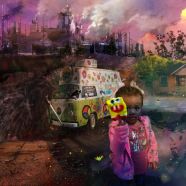





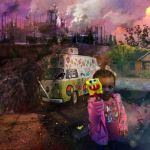
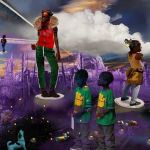
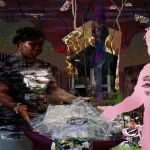
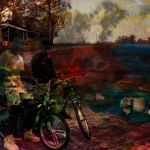
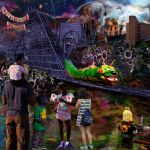
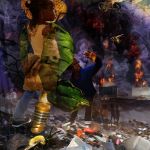
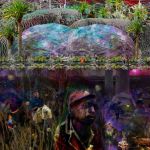
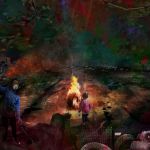
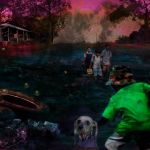
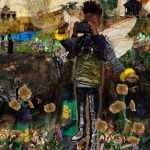
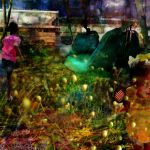
I recently saw the artical about you in “Black Art in America” and think your work is amazing. I would love to pick your brain about your work and also love it if you could take a look at some of my collage work. My website is http://www.milesofdesignstudio.com
I recently saw the artical about you in “Black Art in America” and think your work is amazing. I would love to pick your brain about your work and also love it if you could take a look at some of my collage work.